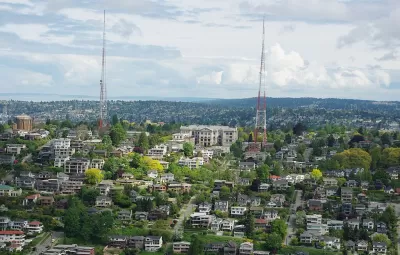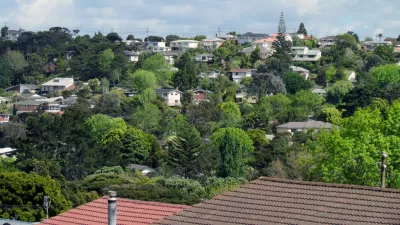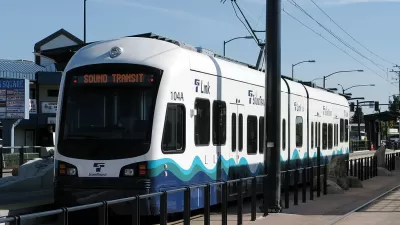The city should look back to its past for lessons about creating more livable, affordable, and equitable neighborhoods, says a new report.

The Seattle Planning Commission has released a new report that advocates for a move away from single-family zoning. The report recommends that the city instead embrace a more diverse array of housing types that brings back “missing middle housing.”
This housing—which include duplexes, multiplexes, and smaller apartment buildings—historically made up some of the most livable Seattle neighborhoods. But over time, zoning regulations changed and now only 12 percent of land is available for such small-scale developments, reports Natalie Bicknell.
So much low-density, single-family housing means that Seattle has not kept up with its housing needs, says Bicknell:
With roughly 75% of available land reserved for single-family lots, despite the city having added more than 180,000 residents, some single-family zoned areas of the city have actually declined in population since the 1970’s. At the same time, since 1900 the average size of a single-family home has increased by 1,000 square feet.
The report proposes a range of strategies, including incentivizing and easing restrictions on smaller and denser housing developments, limiting the size of single-family homes, and developing urban villages that provide access to transit.
FULL STORY: Is it Time to Ditch 1950’s Era Single-Family Zoning?

Planetizen Federal Action Tracker
A weekly monitor of how Trump’s orders and actions are impacting planners and planning in America.

San Francisco's School District Spent $105M To Build Affordable Housing for Teachers — And That's Just the Beginning
SFUSD joins a growing list of school districts using their land holdings to address housing affordability challenges faced by their own employees.

The Tiny, Adorable $7,000 Car Turning Japan Onto EVs
The single seat Mibot charges from a regular plug as quickly as an iPad, and is about half the price of an average EV.

Seattle's Plan for Adopting Driverless Cars
Equity, safety, accessibility and affordability are front of mind as the city prepares for robotaxis and other autonomous vehicles.

As Trump Phases Out FEMA, Is It Time to Flee the Floodplains?
With less federal funding available for disaster relief efforts, the need to relocate at-risk communities is more urgent than ever.

With Protected Lanes, 460% More People Commute by Bike
For those needing more ammo, more data proving what we already knew is here.
Urban Design for Planners 1: Software Tools
This six-course series explores essential urban design concepts using open source software and equips planners with the tools they need to participate fully in the urban design process.
Planning for Universal Design
Learn the tools for implementing Universal Design in planning regulations.
Smith Gee Studio
City of Charlotte
City of Camden Redevelopment Agency
City of Astoria
Transportation Research & Education Center (TREC) at Portland State University
US High Speed Rail Association
City of Camden Redevelopment Agency
Municipality of Princeton (NJ)





























